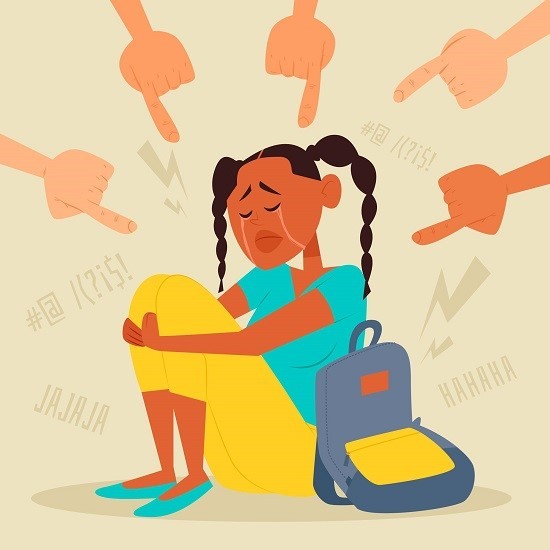Over the past two decades,
bullying has become a true social
epidemic, damaging and affecting the lives of so many, including children who
have just started their school journeys.
اضافة اعلان
Children are either teased, pushed, punched, left out,
tormented, or humiliated, and in some severe cases, all of the above.
Researchers have spent decades studying, analyzing, and categorizing all the
different types of bullying and every renaissance it has had, from hiding
someone’s
school lunch to name-calling on the internet.
While for anyone who has experienced or is experiencing
being bullied it might feel that they are alone and unique in their experience,
statistics show otherwise. While the prevalence of bullying varies relatively
worldwide, its prevalence in Jordan, based on a study done at the University of
Jordan, stands at 47 percent.
The importance of understanding gender differences
Researchers have shown a growing interest in understanding
the role that gender plays in bullying, and how gender stereotypes and gender
identity affect the type of bullying and the experience that people have with
it.
The way
children experience their gender identity can
heavily affect the way they interact with their peers and adapt to their
environment. At the same time, gender stereotypes are what
socialize children
into their gender roles in the first place. So when society socializes boys
into being strong and dominant, and girls into being sensitive and caring, the
bullying will, in turn, look different.
Because these gender stereotypes have been perpetuated for
so long and have become the social norm, especially in the
Arab world, where
the notion of a man being soft and sensitive and a woman being strong and
independent still comes as quite a shock, a child who does not abide by his/her
expected gender role tends to become a victim of bullying.
Female bullying
 (Photo: Pixabay)
(Photo: Pixabay)
When we think of a girl
bully,
most would visualize the typical “mean girl”; popular, rude, self-centered, and
usually, a girly girl. It is not uncommon for a girl bully to be someone who
seemingly fits into the stereotype of what a woman is usually expected to be in
society: a topic of frivolous gossip and a spreader of frivolous gossip. This
is why many girls tend to bully each other either indirectly or through
relational aggression, in which harm is done to the victims through damaging
their relationships or their social status.
As any teacher or counselor would know, getting to the
bottom of who started a certain rumor in a group of girls could take an
extravagant amount of time. That is because girls usually tend to use indirect
methods that might not be easy to recognize, which is why they go undetected
for much longer. Which is why you might consider female bullying to be slightly
more dangerous, because by the time the truth is uncovered and repercussions begin
to make themselves felt, the
emotional damage to the victim had already been
done.
It is not a stretch to describe female bullying as
intricately woven plans that are studied and meticulously executed. Whether it
is passing judgmental looks, and whispering and laughing in someone’s face, or
recruiting other girls to bully the victim, in turn also making them a victim,
it is nothing short of psychological warfare.
One of the most common strategies used is convincing others
not to be friends with a certain, less popular, girl. Girls tend to operate
with a “pack mentality” to spread rumors' and gossip; they exclude whoever they
want and make them feel like they do not belong, and threaten everyone else to
comply with such demands, and most will out of fear that they will be punished
and ostracized.
In many studies, female participants have even admitted to
being glad that someone else is the chosen punching bag for
emotional abuse,
because as long as it is someone else, that means that they are safe.
Many girls disguise their bullying by acting in a
passive-aggressive manner that they can defend if they are ever confronted by a
figure of authority. Some studies have even shown that despite both boys and
girls participating in cyber-bullying, girls tend to use it more frequently due
to the anonymity that it offers.
Male bullying

(Photo: Pixabay)
Male bullies tend to choose the road of
physical aggression
as their main form of bullying. The key difference in the way boys bully can be
traced to what society tells them they have to be. There is an understood “boy
code” amongst males that conditions them to follow a set of rules that
determine their manhood. Simply put, in order to be considered a real man, you
have to be the leader of the pack; you have to be strong, macho, athletic, and
dominant. This is why so many boys bully through fighting and dominating the
weaker victim – who usually tends to have a weaker build – they enjoy the
status that it brings.
Spotting bullying among boys might be easier due to its
direct and outwards nature, as boys do not tend to bother hiding their bullying
because, the reality is, most of them are proud of it. They are proud to find
themselves in a principal’s office for beating up a weaker student, and that
pride stems from the words of encouragement that they are most likely to
receive from the men in their family over their hostile behavior toward
others.
Research has also shown that boys tend to bully both boys
and girls, while girls tend to only bully other girls. That can also be traced
to gender stereotypes that socialize boys into seeing girls as being weaker
and, therefore, an easier target.
However, bullying among boys does tend to blow over more
quickly than that among girls. Boys show a greater tendency to accept and be
more tolerant of a certain amount of bullying, which is why it is not unlikely
for boys to remain friends or keep a certain civil relationship with someone
who bullied them.
In conclusion, it is important that our approach, as parents
and educators, to the issue of bullying be inclusive and gender-sensitive. It
is important to recognize all experiences with bullying and identify all forms
of it within school policy, along with clear and articulated prevention and
intervention strategies that are tailored according to these experiences,
shaped and driven by gender stereotypes.
While it is true that not everyone can be friends, we cannot
simply brush off any type of bullying as part of normal social hierarchy that
is unfairly deemed necessary for the formation of children in their
environment.
Read more Education





